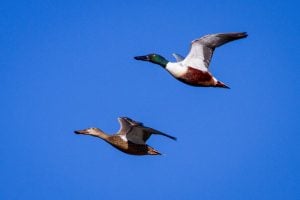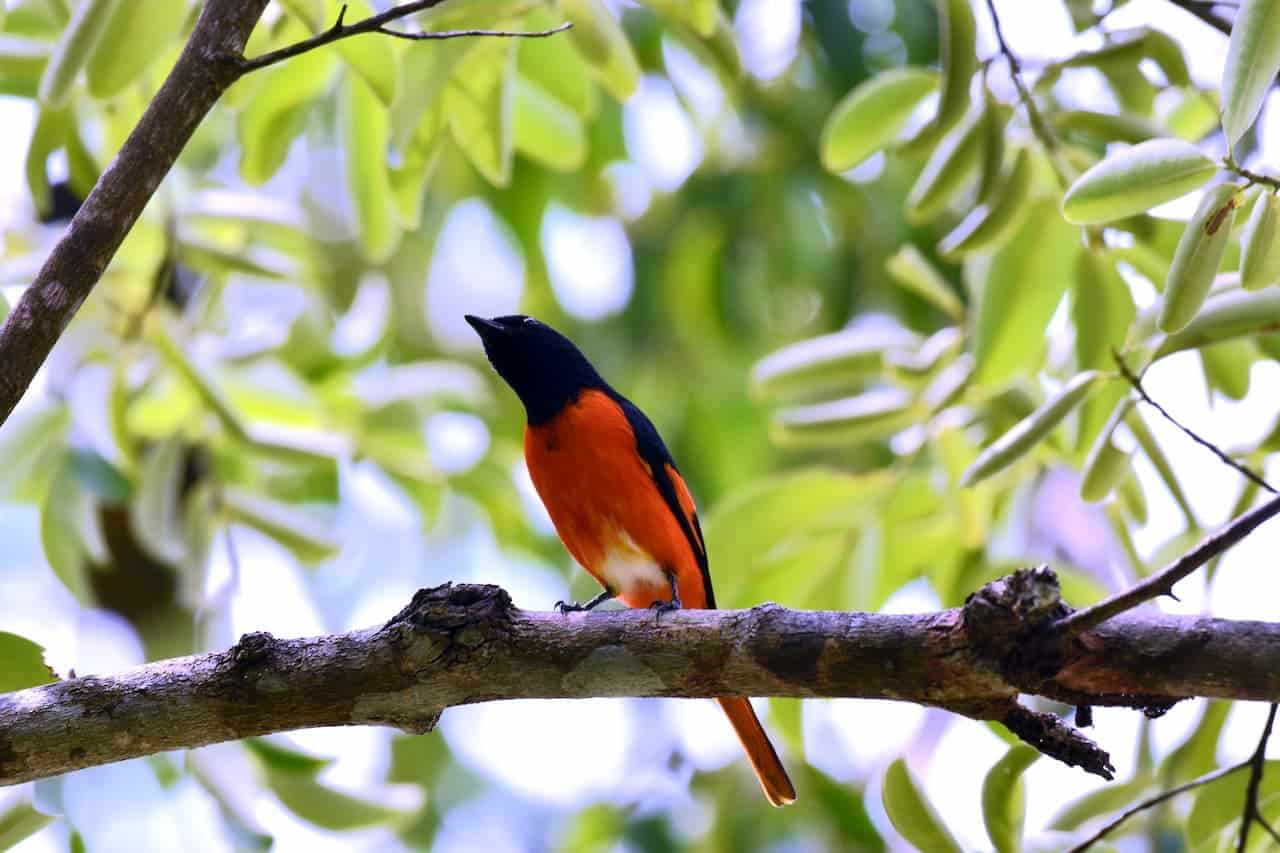Shovelers or Northern Shovelers
Shovelers or Northern Shovelers (Spatula Clypeata)
The Northern Shovelers (Anas clypeata), sometimes known simply as the Shoveler (pronounced /ˈʃʌvələr/), is a common and widespread duck.
This species was first described by Linnaeus in his Systema naturae in 1758 under its current scientific name. Usually placed in Anas like most dabbling ducks, it stands well apart from such species as the Mallard and together with the other shovelers and their relatives forms a “blue-winged” group that may warrant separation as genus Spatula.
Distribution / Range
It breeds in northern areas of Europe and Asia and across most of North America, and is a rare vagrant to Australia.
In North America, it breeds along the southern edge of Hudson Bay and west of this body of water, and as far south as the Great Lakes west to Colorado, Nevada, and Oregon.
This bird winters in southern Europe, Africa, northern South America, and the Malay Archipelago.
In North America it winters south of a line from Washington to Idaho and from New Mexico east to Kentucky, also along the Eastern Seaboard as far north as Massachusetts.
In the British Isles, home to more than 20% of the North Western European population, it is best known as a winter visitor, although it is more frequently seen in southern and eastern England, especially around the Ouse Washes, the Humber and the North Kent Marshes, and in much smaller numbers in Scotland and western parts of England. In winter, breeding birds move south, and are replaced by an influx of continental birds from further north.
This dabbling duck is strongly migratory and winters further south than its breeding range (so far so that there have been four reports in Australia). It is not as gregarious as some dabbling ducks outside the breeding season and tends to form only small flocks.
The Northern Shoveler is one of the species to which the Agreement on the Conservation of African-Eurasian Migratory Waterbirds (AEWA) applies.
Description
This species is unmistakable in the northern hemisphere due to its large spatulate bill. The breeding male has a green head, white breast and chestnut belly and flanks. In flight, pale blue forewing feathers are revealed, separated from the green speculum (= distinctive wing patch) by a white border. In early fall the male will have a white crescent on each side of the face. In non-breeding (eclipse) plumage, the drake resembles the female.
The females are light brown, with plumage much like a female Mallard, but are easily distinguished by the long broad bill, which is gray tinged with orange on cutting edge and lower mandible. The female’s forewing is grey.
They are 19 inches long and have a wingspan of 30 inches with a weight of 1.3 pounds.
Calls / Vocalization
This is a fairly quiet species. The male has a clunking call, whereas the female has a mallard-like quack.
Habitat
This is a bird of open wetlands, such as wet grassland or marshes with some emergent vegetation.
Breeding
The nest is a shallow depression on the ground, lined with plant material and down, usually close to water.
Diet / Feeding
Northern Shovelers feed by dabbling for plant food, often by swinging its bill from side to side and using the bill to strain food from the water. It also eats mollusks and insects in the nesting season.
Historic specimens
No living subspecies are accepted today.
Fossil bones of a very similar duck have been found in Early Pleistocene deposits at Dursunlu (Turkey). It is unresolved, however, how these birds were related to the Northern Shoveler of today; i.e. whether the differences noted were due to being a related species or paleosubspecies, or attributable to individual variation.
More Duck Resources
Diet / Feeding:
Shoverlers feed by dabbling for plant food, often by swinging the bill from side to side and using the bill to strain food from the water. During the nesting season, these ducks also eat mollusks and insects.
Ducks generally feed on larvae and pupae usually found under rocks, aquatic animals, plant material, seeds, small fish, snails and crabs.






